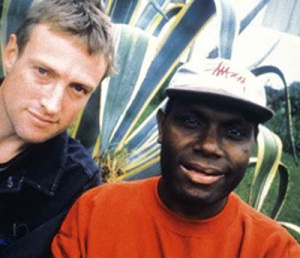In early 1997 the Australian label Origin Records released Telek, a collaboration between the popular Tolai vocalist George Mamua Telek and the Australian keyboard player and producer David Bridie that was packaged as a debut recording for Telek, even though he was already well known in his native Papua New Guinea.
A repackaged and resequenced version released by Origin later that year and titled Go long we long lon bush won critical acclaim, prompting yet another repackaged and resequenced release shortly thereafter.
These collaborations exemplify a positive and productive outcome of what Steven Feld has termed a schismogenetic relationship between the West and the non-West, indicating that such syncretic projects need not collapse difference, and may even produce a complementary development of existing local characteristics.
This according to “Questions of origin: George Telek and David Bridie’s collaborative recordings” by Denis Crowdy and Philip Hayward (Kulele: Occasional papers on Pacific music and dance III [2001] pp. 85–105). Below, a Telek–Bridie collaboration.
Related article: A lullaby for world music












